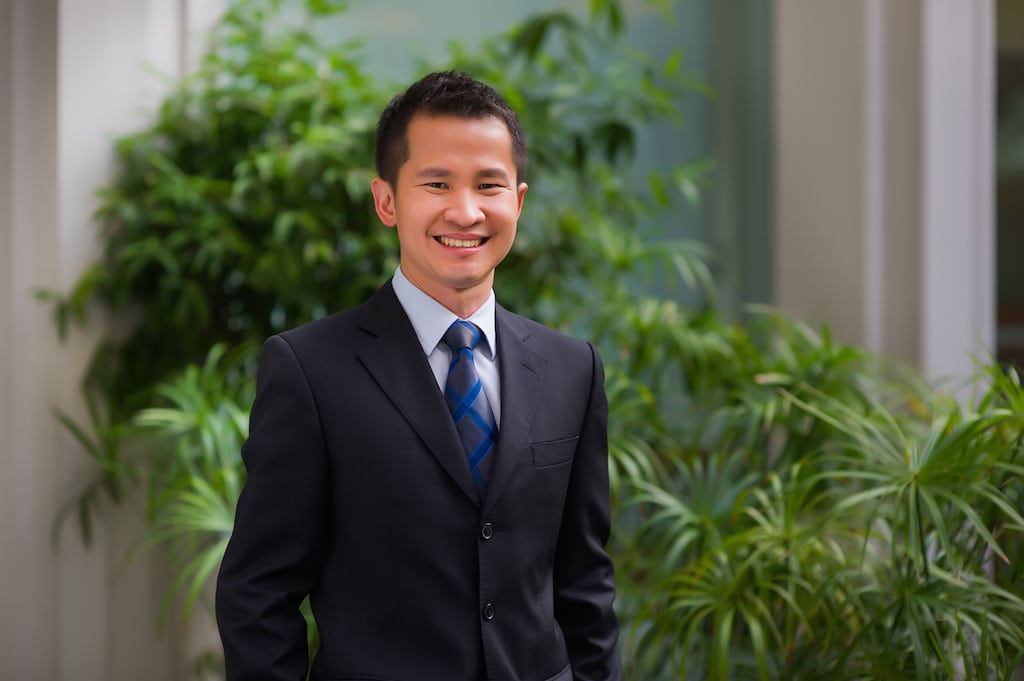Interview: Singapore Tourism Board CEO on Reinventing a Destination

Skift Take
Editor’s Note: Skift is publishing a series of interviews with CEOs of destination marketing organizations where we discuss the future of their organizations and the evolving strategies for attracting visitors. Read all the interviews as they come out here.
This continues our series of CEO interviews that began with online travel CEOs in Future of Travel Booking (now an e-book), and continued with hotel CEOs in the Future of the Guest Experience series (which is also an e-book).
In less than a decade, the Singapore Tourism Board has helped engineer an impressive turnaround of the destination's brand in the eyes of global travelers, from what was once considered primarily a financial business hub into one of the most glamorous gateways in Southeast Asia.
The opening of the Marina Bay Sands hotel in 2010 was a turning point, with its rooftop infinity pool cantilevered 215 feet out into thin air 55 stories above the ground. Also new within the last few years, the Gardens by the Bay tropical theme park, cruise ship terminal, Formula One car race, Singapore Flyer ferris wheel, and other new luxury hotels like The Fullerton Bay Hotel and Capella Sentosa have modernized the city dramatically.
However, there's also growing consumer interest in the more casual, local Singapore travel experience in this city presently ranked by The Economist as the world's most expensive. Visiting chefs and travel media have drawn global attention to the amazing street food in Chinatown's "hawker centers" and some edgy local restaurants like Open Door Policy in the emerging Tiong Bahru neighborhood. For 2015, Lonely Planet named Singapore its #1 top place to travel.
Aware of this demand for more culturally immersive travel, as well as peer-to-peer online sharing of content across all age and economic demographics, the Singapore Tourism Board launched a new website last year with a strong focus on editorial travel content and social media. The homepage at YourSingapore.com presently shows the Lonely Planet story, ten special events in March, ten things to do with kids, nine parks, some cool places to go for local food, and hundreds of web posts throughout the site.
In celebration of the city-state's 50 years of independence this year, the tourism board also helped develop the Singapore: Inside Out global art tour. A wide range of local artists and designers are showing examples of their work in Beijing in April, London in June and New York in September to drive continued global awareness around Singapore's evolving cultural scene.
We spoke with Lionel Yeo, CEO of Singapore Tourism Board, to dive into his strategies to grow leisure tourism arrivals and shape the Singapore brand moving into the mobile-first future.
Skift: Travelers today are relying more on their mobile phones and researching heavily before a trip. How is Singapore Tourism Board evolving to adapt to those trends?
Lionel Yeo: At the Singapore Tourism Board, we've definitely evolved our approach to accommodate those trends. First, when we revamped our official consumer website YourSingapore.com last year, we designed the site for mobile devices first, so it is now optimized for all screens. The desktop and mobile websites now both make use of GPS to help users navigate to the places of interest that they may wish to go to. We have also invested in mobile search, since we know that's separate and different from desktop search, so we really are catering to travelers that are relying more and more on their mobile phones.
If you go to YourSingapore.com, you will find that our editorial approach is radically different from what it was previously, so it's no longer the Singapore Tourism Board telling you about the destination. There's now a very strong traveler voice. There's a very strong third party voice that produces content, which we then feature on our site, which was one of the major parts of the revamp of the website.
On our social media channels, such as Facebook where we have almost one million fans, we are creating conversations about Singapore and encouraging people to post their travel experiences in our city, which inspires other people to post their own images and content to share with others around the world.
Skift: Do you partner with, or provide any guidance to your destination partners about digital marketing?
Yeo: Yes, I think like many other destinations we use hashtags in social media and the website as a way of extending the conversation with our partners and visitors, and we also work with our industry partners and event organizers to use the same hashtags in a consistent manner.
We take an active role to help our tourism sector companies adapt to these trends and bring them up to speed so that they can take advantage of that. For example, we're working with TripAdvisor to conduct industry sessions where our local businesses understand how they get listed, understand how they respond to comments, and things like that to benefit their businesses.
We have a very close relationship with the industry, so we are constantly updating and briefing the hotel concierges and the people in the travel trade who have that direct relationship with consumers. We want to make sure that they are in the best position to be the trusted source of advice for visitors once they arrive in Singapore.
Skift: Is your consumer profile evolving in any way?
Yeo: Yes, I would say it's changing and evolving constantly. Essentially, where they're coming from, the way in which they are traveling, and the way in which they're consuming media, these are pretty big things that we watch.
In terms of where they're coming from, we welcomed more than 15 million visitors throughout 2014. More than 75% of that 15 million come from the Asian region, and that's quite different if you compare to the '80s and '90s when we generally had a higher percentage of long-haul traffic. So that's a function, I suppose, of the growth of Asia, a function of the fact that in Asian economies there are vast numbers of people entering the middle classes and therefore able to travel internationally. And when Asians start to travel, Singapore is at the top of their list.
Obviously the way people are traveling is changing as well. I would attribute that in a large part to the rise of low cost carriers in our part of the world. Travel is really a lot more affordable and people see international destinations as much more within reach, and they can travel more frequently. Someone who lives in Jakarta or Surabaya can imagine visiting Singapore not just once a year or once in two years, but several times a year because of low cost carriers.
Skift: Are you developing your marketing strategies and platforms facing the North American market in any new ways?
Yeo: Yes, in some circles, people call it native advertising. We're finding that it's actually really important for us to be on platforms where our target audience are spending their time, whether it's a magazine or a particular section of a newspaper. Then we create strong content with content partners that will not look out of date on those platforms, and that will be able to reach out to our target audience and resonate with them. So if we're working with titles like Conde Nast Traveler in North America for example, it is about creating content that belongs and looks entirely natural in those platforms.
At the same time, I think the internet is the top source of information for travelers. Digital is very much a priority for us, but we always look at it in an integrative fashion. And while we continue to use traditional channels such as print, we make sure that those campaigns are integrated with online and social media platforms.
Skift: How is the Singapore travel brand evolving, in general, that drives some of those editorial marketing decisions?
Yeo: We have been thinking about how we need to add more depth and layers to the global perception of Singapore as a city. I think we are quite well known as a business destination. We are quite well known as a financial services hub. We've got a great airport. We're also quite well known for having a number of large scale attractions and events.
One of the ways in which we are looking to complement that brand perception is to make sure that the local and authentic character of the city comes up as well, when we present Singapore to an international audience. This is not just a global city. We are a global city with very strong local characteristics and a very strong local character. There are creative people in Singapore doing very interesting things, and we're trying to see how we can bring them up more in our international promotion efforts.
Skift: There is a lot of consumer interest in that, especially regarding Singapore. How else are you getting that across to Western markets?
Yeo: On a number of levels. For example when we engage with members of the media and they have a chance to visit Singapore, we make it a point to show them both the global part of the city, but as well, the authentic and the more local parts. We find that has become more and more of interest in the past one or two years in the media, like The New York Times talking about a traditional coffee shop in Singapore.
I suppose they do that because it's something that readers find interesting, and so they write about some of these more local parts. When food magazines write about the culinary scene in Singapore, they not only talk about the high-end, world class restaurants that are available here, but they also talk about the street food, which is of very high quality and very affordable. We are seeing increasing interest in profiling both aspects of Singapore, the global and the local.
Skift: Was the new Singapore: Inside Out project also designed to help spread awareness of Singaporean culture?
Yeo: Yes, absolutely. Singapore: Inside Out is a true showcase of our creative talents in fields as diverse as digital arts, dance, music, textiles, graphic design and literature, and some of the work that they have produced. I think it's really well designed to show a more, if you like, creative side of Singapore, and that's a project that will be coming to a place near you in New York this fall.
You see this new spark of creativity in many different areas. You see that in music for example. There are a lot of talented Singaporeans showing a lot of potential and promise in music. We see some very interesting fashion designers creating beautiful clothes for Singapore, as well as international markets. We're seeing the graphic designers and visual artists doing very well in art shows around the world.
So yes, I think there's a sense that there is this wave of creative energy that's sweeping over Singapore. I should mention, on the film side, we were very proud to have one of our filmmakers, Anthony Chen, win a very prestigious award at the Cannes Film Festival in 2013. We are very thrilled at that. There's a whole generation of new filmmakers here that I think you'll be hearing more of soon.
Skift: Besides marketing the destination brand, how do you see the role of destination marketing organizations (DMOs) evolving in the next five to ten years?
Yeo: The role of the Singapore Tourism Board actually goes quite far beyond that of a traditional destination marketing organization. We have a very clear mandate to also champion industry development, as well as product development and events.
When we hold the Women's Tennis Association Final, which is the season finale for women's tennis, that's something that we are heavily involved in, in terms of the execution of the event once we have won the bid. Likewise for the Formula One race, the Singapore Tourism Board is intimately involved in that mega-event.
We are not just the marketer for the destination. We are very much involved in product development, in industry development, and as well in local engagement, and making sure that local people are proud of what we're doing in terms of tourism development.
Skift: Are you concerned about the growing number of travelers booking sharing accommodations such as Airbnb, especially because they're not paying taxes?
Yeo: I think in our context, unlike some DMOs, we do not rely on taxes that travelers pay for our revenue. We're not funded by taxes from hotels for example. Our situation is a little bit different. I think in Singapore the whole sharing economy in relation to tourism and travel touches really more on the regulatory issue around the use of residential properties, as is the case in many cities around the world.
Skift: So your DMO is funded entirely by the government?
Yeo: Yes, almost entirely. I would say 95% of our operating revenue is from the government. I think the Singapore government takes a very strategic view of tourism, not only to really look at the direct economic benefits that come with tourism development, we are also quite aware of the indirect benefits for the city in terms of the vibrancy, in terms of the attractiveness of the city.
Just now we were talking about bringing big events, like big sporting events or other kinds of leisure events into the city, so I think these are indirect benefits because the people who live here benefit as well. At the same time, by ensuring that we continue to keep Singapore an attractive city, we are helping other economic agencies do their job, because we're helping Singapore attract stronger investment for talent and for business.
Oftentimes when our colleagues in the economic development board go around the world to make their pitch for capital and businesses to come to Singapore, we like to think that we make their job easier when we help create a livable and vibrant city, which people want to come to and possibly even reside.
Skift: If the government gave you ten times more funding, what would you do with those funds?
Yeo: It would allow me, from a marketing point of view, to cover more markets than we already do. There are some markets that we would love to explore a little bit more. Even within some of our primary markets like Indonesia and China, there are secondary or even third-tier cities that we could go into. And in a region like Europe, for example, there are Scandinavian countries that I think offer interesting emerging markets for Singapore.
I think the other area is more investment in industry capabilities. We see it as very much our role to make sure that the private sector in Singapore continues to innovate, continues to develop capabilities that allow them to be more productive, more efficient, and more creative in terms of the experience that they can create for visitors.
So we would really like to invest more in our industry capabilities. I think finally, a larger budget would allow us to look at more investments in business tourism, whether it's infrastructure or in terms of getting more major business events to come to Singapore.
Greg Oates covers hospitality and tourism development. Email him at go@skift.com.





